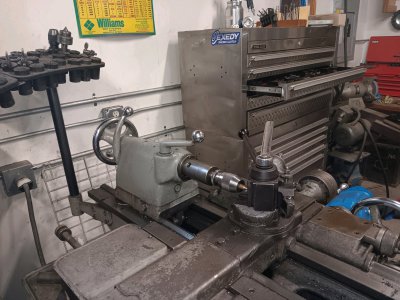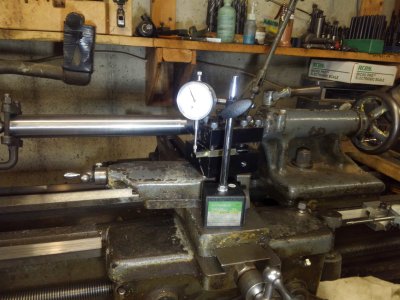I know this is a much discussed topic with, perhaps strong opinions, but I've recently changed my thinking on these and would like to share my thought process (for whatever that may be worth). Like many, when I first started using my lathe, I quickly got frustrated with the lantern tool post that came with the machine. The need to constantly set tool height when changing tools and lack of rigidity, particularly when parting, were my main sources of frustration. I then did a bit of study and quickly converged on an import multi-fix quick change tool post system as the solution for me. When I took delivery of the QCTP system, i was very happy with the build quality, rigidity and versatility of the system. I predominately use high speed tool bits with the occasional brazed carbide tool bit. I do not use carbide insert tooling. In order to better accomodate the various HSS tool bit blanks i use (5/16", 3/8" & 1/2") i made some simple tool holders (picture attached) from cold rolled bar stock and i was in business. I used this system successfuly for many years and really didn't give it a second thought.
However, after a bit of time, i found myself wanting more tool holders to accomodate the various tool bits (my multi-fix system came with three standard tool holders and a boring bar holder). I looked at pricing and at about $80.00. holder I paused to really think through this. After a bit of reflection, i realized that the thing that bugged me most about the QCTP system was not necessarily the lack of an adequate inventory of tool holders, but was the clutter all those tool holders caused when they were not on the machine. Getting more tool holders would just lead to more clutter. At about this same time, i bought a second, smaller lathe that came with an import piston type QCTP set. Again, more clutter.
So, after a bit of additional pondering, I decided to change both machines to four way tool posts. Both of which are Enco brand (3 1/2" & 4 1/2"), with 12 indexible positions. For my use, the main down side of the four way system is not the need for shims, rather, it is the need for seperate turning and facing tools required to avoid interference when facing by swigning the turning tool 30 deg. I got around this on the small lathe by grinding a suitable tool to avoid this intereference (picture attached) and on the large lathe by fabricating a tool holder that holds the HSS tool bit at an angle of 15 deg (pic attached). I'm very happy with this change as it has cleared up all kinds of clutter. I sold both QCTP systems which more than offset the cost of the four way tool posts. I hope this helps others who may be thinking about this.




